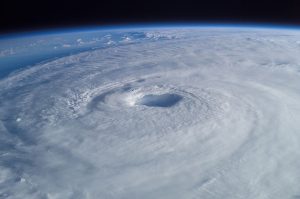Natural Disaster in Australia 2017-2022
- Posted by Oliver
- Posted on June 25, 2022
- Climate theories, solar science predictions, climate models
- Comments Off on Natural Disaster in Australia 2017-2022
Weather affects our lives daily, usually in minor ways. It determines what we are going to do, where, and what we will wear.
Sometimes weather affects our lives in a more profound way. Extreme weather can lead loss of homes, livelihoods, and even lives.
Extreme weather is not a disaster in itself. It becomes so when it affects human lives. Here is a summary of disasters that were the result of extreme weather in Australia in the last five years.
Eastern Australia Floods – 2022
The most recent natural disaster cost 22 human lives. It affected parts of the states of Queensland and New South Wales. In particular, the cities of Brisbane, Gympie, Maryborough, and parts of Sydney suffered major flooding.
The cause was a low-pressure system over Queensland that brought in precipitation from the Coral Sea. The local colder air caused the rain to fall. At the same time, there was a high-pressure system over New Zealand which prevented the saturated air to drift away. The result was 67 cm of rainfall in three days in the Brisbane area.
Cyclone Seth – 2022

In Australia, this cyclone took the lives of two people in Queensland and New South Wales.
Seth started around the 21 of December near the Arafura Sea, just north of Australia. Three days later the Bureau of Meteorology started predicting Category 1 intensity for Seth. Seth continued to move east and then southeast, receiving the tropical cyclone classification. Seth was classified as a subtropical cyclone by the BoM on January 2, 2022. When it turned into a post-tropical cyclone it did most of its damage and killed two individuals.
Cyclone Seroja 2021
On April 11, 2021, Cyclone Seroja did most of its damage. The hardest-hit town was Kalbarri, a coastal town some 600 km north of Perth. In Western Australia, 4,350 people lost power and one person from Coral Bay died. The damages caused by Seroja were estimated to be A$200 million.
The first signs of the development of a cyclone were reported on 29 March south of Timor. During its development, what would turn out to become cyclone Seroja absorbed the effects of another tropical cyclone, Odette. Before reaching the Australian coast, the storm had caused much damage in Timor and Indonesia. It continued to intensify over several days before it made landfall in Australia. Here, it reached gusts of up to 150 km/h and sustained speeds of 120 km/h.
Eastern Australia Floods – 2021
The 2021 flooding affected New South Wales and large parts of Sydney’s suburbs in particular. They were Sydney’s worst flooding in 60 years. At least three people died in the events and two are still missing. The property damages were estimated to be more than A$ 1 billion. 18,000 people had to be evacuated and 1,000 individuals were rescued.
The flooding was caused by rainfall of up to 600 mm in about a week. For comparison, normally this area receives 1000 mm of precipitation in a year. Responsible was a low-pressure area and a high-pressure system over Tasmania that prevented the rain clouds to move away.
Woorooloo Bushfire – 2021
This bushfire destroyed 86 homes and injured at least eight people in the greater area of Perth in Western Australia in February 2021.
In the previous months, the area reported lots of rain, which caused grass and plants to grow rapidly. In the following months, no rain fell, which resulted in the drying up of the new vegetation. February was hot with the temperature reaching 38 °C with strong winds, which caused the fire to spread rapidly.
One man was arrested on the suspicion of executing fire hazardous work. Likely, he was using an angle grinder to remove a padlock. Sparks had ignited the fire.
2019-2020 Bushfire Season – 2019-2020
Also known as the Black Summer, this event destroyed around 20,000,000 hectares and 10,000 buildings. It affected large parts of Australia, including New South Wales, Victoria, and South Australia. It took the lives of up to 34 people. Yet another 445 died as a result of smoke inhalation. Costs of the disaster were estimated to be A$78-88 billion, making it the most costly natural disaster.
The direct cause of the fire is not known. Most likely, it is one of the following
- Arson
- Discarded cigarette butt
- Lightning
The fires were aggravated due to drought, a positive Indian Ocean Dipole, and high temperatures.
Tathra Bushfire – 2018
The Tathra bushfires occurred on 18 and 19 March 2018. It affected some 1,250 acres of land in the southern part of New South Wales. No casualties were reported but 138 homes were destroyed or damaged.
Again, the main causes were thought to be extreme weather conditions. The area suffered high temperatures, strong winds, and drought.
Cyclone Debbie – 2018
Debbie made landfall on 25 March 2018 in the area of Airlie Beach. It affected large areas in Queensland. It caused damage and flooding. It cost the lives of 14 people in the area. Material damages were estimated to be around A$3.5 billion, making it one of the costliest in the history of Australia.
Cyclone Debbie was reported to produce wind speeds of 175 km/h on average and gusts of up to 250 km/h.
Carwoola Bushfire – 2017
Five years ago, a bushfire threatened the town of Carwoola, about 250 km southwest of Sydney. The fire destroyed 11 homes and 3,500 hectares. Two firefighters were injured during their work. Two men were arrested and charged with failing to comply with fire regulations for the area.
Conclusions
Extreme weather conditions seem to become more prevalent in the last couple of years. There are little humans can do to fight against the elements. The only thing we can do as individuals is be prepared for disasters.